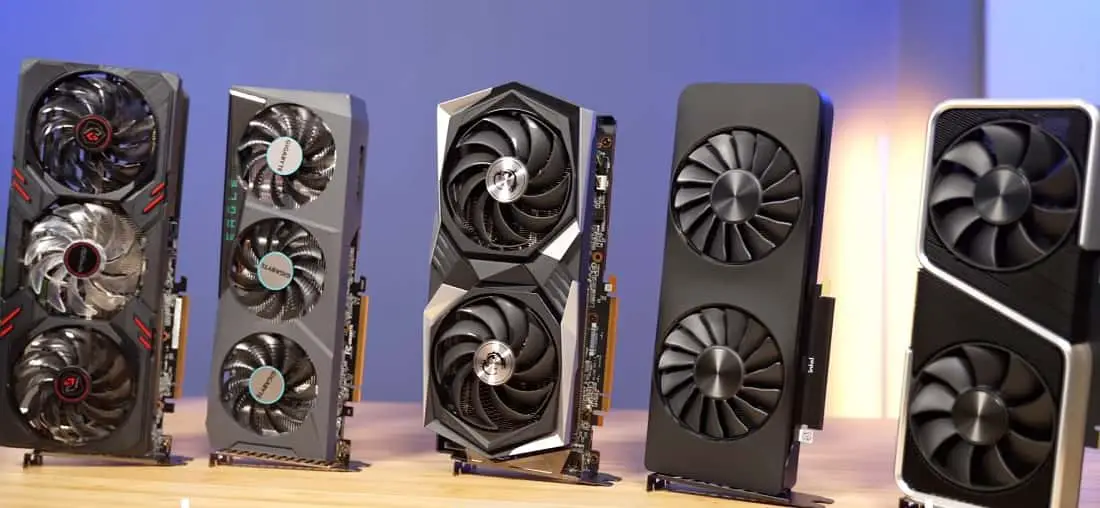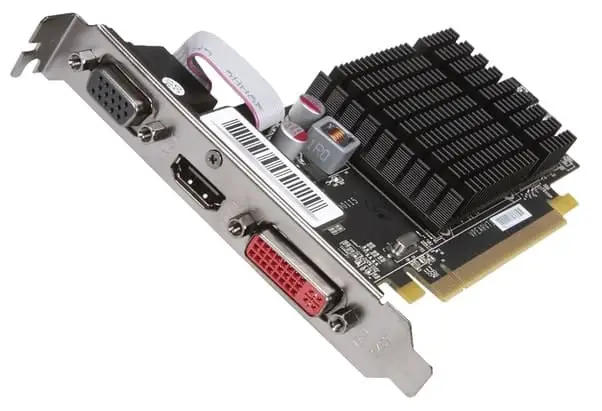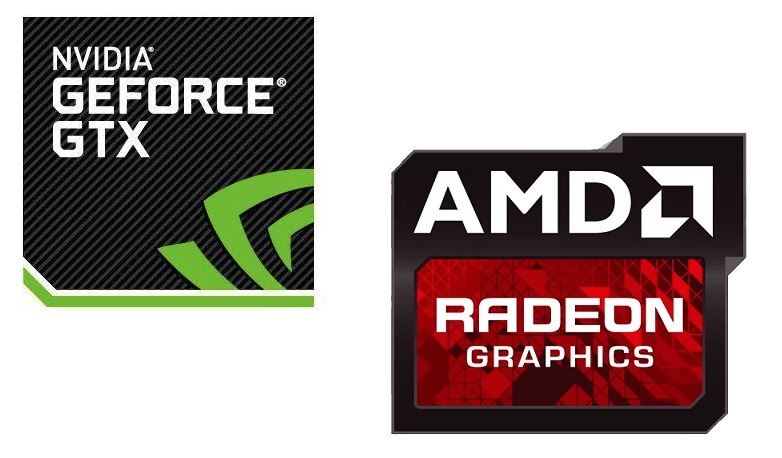Some arguments in the technical world can get overheated. And, one of the controversial debate that the gaming industry has been facing is – which graphics processing unit (GPU) is better – NVIDIA or AMD. Just like every heated debate, there are so many different points that set apart both GPUs. So, not taking any favors, we are going to lay down a clear difference between AMD vs Nvidia. Before starting let’s first understand the GPU and the importance of GPU in the computer.
What is a Graphics Card?
A graphics card is also known as a graphics adapter, graphics controller is responsible for rendering an image to your monitor. And it does this by converting data into a signal that your monitor can understand. That means better graphics card results the better, and smoother an image which is especially important for gamers and video editors.
GPU stands for Graphics Processing Unit the brain of the graphics card and is what creates the visuals you see on the screen. The GPU works as a translator, it takes data coming from the CPU and transforms it into imagery. More complex visuals, like you find in high-definition games require more complex and quicker GPUs to accommodate the stream of data.
The graphics card is the hardware as a whole, while the GPU is a chip, part of the graphics card or an onboard similar, which stands for “Graphics Processing Unit”.
An integrated GPU is a graphics chipset built into the motherboard. Where a dedicated GPU is a second GPU that’s installed on the motherboard. If you’re talking about a PC, the integrated GPU will likely be an Intel chip while the dedicated GPU will either be an Nvidia or AMD chip. Here the difference between Integrated GPU and Dedicated GPU.
Is GPU more powerful than CPU?
GPUs are more powerful than CPUs because GPUs feature a much greater number of relatively unexceptional processing cores. We don’t use them for everything because they require the type of collective work where an overwhelming strength in numbers translates into performance improvements.
Difference between AMD vs NVIDIA
There are two main manufacturers of discrete graphics cards, AMD and Nvidia. Both AMD and NVIDIA have been making video cards for years and have constantly been pushing the boundaries of GPU technology. Both AMD and NVIDIA have the same end goal in mind: To deliver smooth and fast visual performance. However, each company takes a different approach to achieve that goal. Here we have a simple Comparison between AMD vs NVIDIA that help you to choose the right one.
AMD vs NVIDIA GPU Performance
When we are talking about GPUs, then, first of all, we have to consider the performance factor. Firstly, a benchmark for the GPU performance needs to be defined like how many frames per second it can push or how it can run Crysis at medium and high. Here, we can’t express the performance of both the GPUs in one line as performance varies from model to model. But, with Nvidia and AMD, the performance graph is like a heart monitor – one minute up and another minute down. So, there’s no clear comparison.
AMD vs NVIDIA GPU Price
This is a very clear factor where AMD is winning with a large margin. AMD graphic cards are always worth their price as they offer more in the limited price. However, this is the case in low rates reverse, as if you have moderate budget for $200-$300, then things become different. At this price range, AMD has only two options whereas Nvidia has a platter of high-end GPUs to offer. If you want high power from your CPU, then you eventually have to pay a higher price as well.
AMD vs NVIDIA GPU Hardware Technology
Okay, so there no debate on this point that Nvidia has used technology way better than AMD. Their GPU is high performing, better performs computing tasks, produces less heat, and consumes less power. However, AMD compensates by giving increased memory bandwidth on their less expensive models. But, still, you can’t foresee that they produce more heat and consume extra power.
AMD vs NVIDIA GPU Cores
CUDA Cores and Stream Processors are two different technologies used by Nvidia and AMD respectively. So, both technologies are the same and no concrete performance estimates can be drawn here. In the end, it’s all about software optimization. You will only observe a slightly different when certain technologies come into contexts like Nvidia PhysX or Nvidia HairWorks.
AMD vs NVIDIA GPU Software
This is a section where you will find some drastic differences as every company wants to creates a monopoly in the software market. In graphic cards, drivers and control panels are considered instead of software. We can’t comment over the drivers as both Nvidia and AMD constantly releases new drivers, but if you want an answer, then we can say Nvidia has the upper hand.
Speaking of control panels, if you put both AMD’s and Nvidia’s control panels together, then you will automatically see that Nvidia Control Panel is outdated. On the other side, AMD’s Control Center looks very trendy and new with clean and modern design. It comes with eye-soothing blue background effects which make it look very modern.
AMD vs NVIDIA GPU Features
As it is already figured out that you will need FPS hit when you want to record or live stream gaming sessions. So, if you are ready to invest in a good quality capture card, then you are good, otherwise, you need a decent framerate that is offered by GPU drivers. For this, you have Shadowplay and ReLive for Nvidia and AMD respectively. Among both the features, Shadowplay has the upper hand as it can record and stream better with the higher bitrates support. Apart from that, they both can be the same.
So, which one is better?
No one. Yep, because at the end, everything comes to your requirements and budgets. In this post, Nvidia vs AMD, we have figured that they both are great graphic cards with some awesome features. So, the bottom line is AMD can be a good option for low-end users with a limited budget, whereas Nvidia is a graphic card for pro users. Now, the question is which user are you?
- Compare Intel Core i3 vs i5 vs i7 processors Which One Should You Buy?
- Integrated vs Dedicated Graphics Card Which to Use and Why?
- SSD vs HDD Speed and Performance Comparison
- What is the Difference Between 32-Bit and 64-Bit Windows 10 and Processor (CPU)
- Difference between static RAM and dynamic RAM, Which is Faster?


